Key points
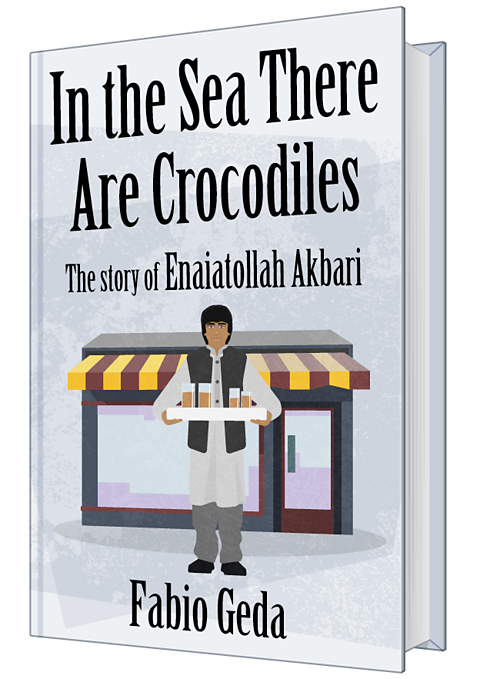
In the Sea There Are Crocodiles is based on the true story of a boy called Enaiatollah Akbari.
Enaiatollah (Enaiat) left Afghanistan when he was ten years old to escape violence and persecutionTreating people poorly based on their political beliefs, race, religion or sexuality.. He arrived in Italy five years later, where he was granted refugeeA refugee is a person who has been forced to leave their country in order to escape war, persecution or natural disaster. status. He told his story to the author, Fabio Geda, who then wrote the book.
Enaiat didn’t remember everything that happened perfectly. He and Geda worked together to recreate his story as truthfully as possible.
In the Sea There Are Crocodiles describes the dangers that Enaiat faced, but also the kindness he experienced during his search to find a place to call home.

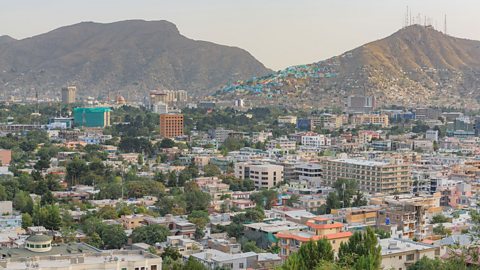
Did you know?
Afghanistan is a country in Asia.
- Its capital city is called Kabul.
- The main religion is Islam.
- Pashto and Dari are its two main languages.
Plot
Enaiat lived in Afghanistan with his mother and younger siblings. They are part of a minority ethnic groupA group of people of the same ethnic background who make up less than half of the total population of the country they live in. called Hazaras. The TalibanThe Taliban is an extreme Islamic group, which ruled Afghanistan from 1996 to 2001. They took control again in 2021. made their lives dangerous so, when he was ten years old, Enaiat's mother took him to Pakistan. She left him in a boarding house so that he could start a better life.
Enaiat didn’t feel safe in Pakistan so he paid people traffickerPeople traffickers sell and transport people illegally, with the aim of exploiting them for money. to take him to Iran with a group of other asylum seekerSomeone who leaves their own country for fears over their safety. They hope to find protection in another country..
In Iran, he worked on a building site. Enaiat was found and taken back to Afghanistan by the Iranian police. He returned to Iran and worked with his friend, Sufi, in a stonecutting factory. Again, he was found and taken back to Afghanistan. He returned to Iran a third time.
After four years in Iran, Enaiat arranged for people traffickers to take him and a group of others on a dangerous journey over the mountains into Turkey. Some of the group died along the way.
In Turkey, Enaiat met four boys who were planning to go to Greece. They paid a people trafficker to take them to the sea and provide a dinghyA type of small boat.. During the crossing, one of the boys drowned. In Greece, the three boys were picked up by the police but Enaiat managed to hide. A kind Greek woman gave him clothes, food, a bus ticket and money so he could buy a ferry ticket to Athens.
In Athens, Enaiat found work, but when the job was complete he couldn't find more work. He decided to go to Italy to find a boy from his village, called Payam. He hid in a storage container on a boat to get there.
By this time, Enaiat was 15 years old. Payam put Enaiat in touch with a social worker called Danila who offered to fosterTo provide a home and care for a child on a temporary or more permanent basis. him. After two years living with Danila and going to school, Enaiat was granted asylumA shelter or refuge. When asylum is granted, it means that the country's government agrees to protect the individual. in Italy.
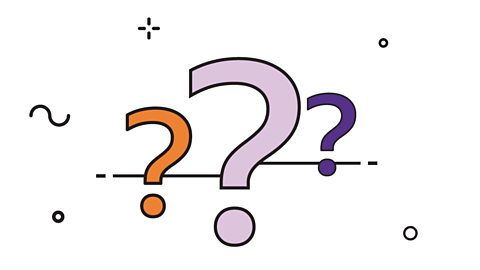
Did you know?
Enaiat travelled from the village of Nava in Afghanistan to the city of Turin in Italy. This journey is over 3,200 miles.

Characters
All characters in In the Sea There Are Crocodiles are based on real people.

Enaiatollah (Enaiat) Akbari
Enaiat is resourceful. He is keen to learn, secure work and find a place where he can be safe.
He is also brave and resilient. Although he experienced terrible things on his journey, Enaiat never gave up hope of finding a place to call home.

Fabio Geda
Geda is the author of In the Sea There Are Crocodiles. He writes Enaiat's story as if it is Enaiat telling it.
At some points in the book there are extracts of Geda and Enaiat talking. These sections are in italics and give an idea of the types of questions that Geda asked Enaiat, and how he replied.
Other characters
Other important characters are Mother, Sufi, Rahmat, Liaqat, Hussein Ali, Soltan, Payam and Danila.
Mother
Enaiat 's mother left him in Pakistan so he could have a better life. She was doing what she thought was best for him so had to be strong and brave. She gave him advice before she left, which shows she was wise, caring and practical.
Sufi
Sufi is an Afghan boy that Enaiat met while living in Pakistan. They travelled and worked together. Like Enaiat, Sufi is resourceful and resilient. He is also ambitious and wants to create a better future for himself.
Rahmat, Liaqat, Hussein Ali and Soltan
These are four Afghan boys between the ages of 12 and 14. They agreed to let Enaiat join them on their journey to Greece. During the crossing, Liaqat fell off the dinghy and drowned. The boys were ambitious but not very careful and were soon picked up by the police.
Payam
Payam lived in Enaiat's village in Afghanistan. He left when Enaiat was about nine years old and travelled to Italy. Payam is extremely kind to Enaiat. He helped him to find a place to stay and showed him how to apply to stay in Italy permanently.
Danila
Danila is an Italian social worker who is kind and welcoming. When Enaiat arrived in Turin, she agreed to let him stay with her. Danila and her family eventually decide to foster Enaiat.
Activity
Themes
Themes are the big ideas that run through a novel, often indicating what the author wants us to think more deeply about. Three important themes in In the Sea there are Crocodiles are:
- Discrimination
- Migration
- Hope
Discrimination
Enaiat faced a lot of discriminationUnfair treatment of a person or a group of people because of their nationality, gender, religion or other reasons. because of where he came from, his ethnicity and religion.
In Afghanistan, his school was closed because the Taliban didn’t want the Hazara people to be educated.
In Pakistan, a shopkeeper refused to serve him and beat him because he was a Hazara.
During his journey from Pakistan to Iran, he became very ill but couldn’t go to hospital because he was living in the country illegally.
Enaiat's mother told him to always be hospitable and tolerant, but people don’t always treat him the same way in return. His experiences clearly show how unfair this is and suggests that the world would be a better place if everyone were treated equally and kindly.
Migration
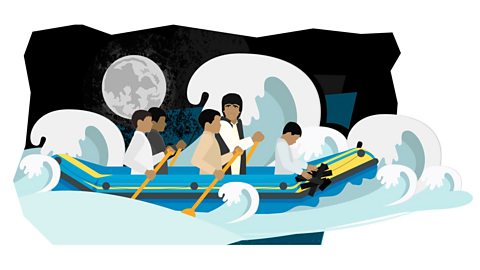
Migration is the movement of people from one place to another to live or work. People can move long or short distances and might move for a short period of time or might spend the rest of their lives in a new place.
Enaiat is a refugee. He was forced to migrate because it wasn't safe for him to stay in Afghanistan. He has to travel illegally, so is dependent on people traffickerPeople traffickers sell and transport people illegally, with the aim of exploiting them for money. to help him. People traffickers offer an illegal service. They often transport people in dangerous conditions and trap them in jobs if they can't pay.
In the Sea There Are Crocodiles shows how badly refugees and migrants can sometimes be treated. For example, Enaiat experiences police raids and sees police beating other refugees.

Does everyone in the novel treat Enaiat badly?
No. Some people that Enaiat met were very kind.
In Greece, he fell asleep in someone’s garden. The lady who owned the garden gave him food, a shower, clothing, money and a bus ticket.
At this point, the story is interrupted by Geda, who asks Enaiat to describe the lady. Enaiat insists that her name and her description aren’t important because:
she could have been anybody… anybody could have behaved like that.
This suggests that everyone is capable of kindness if they could only see each other as equals.

Hope
Despite the dangers he faces in each new country, Enaiat remains hopeful that there is a better life for him somewhere. He says that:
the hope of a better life is stronger than any other feeling.
Hope is also what led Enaiat's mother to leave him in Pakistan. Even though she put him in a dangerous situation, Enaiat understands that she thought “it was better to know I was in danger far from her; but on the way to a different future”.
Activity
Language
Writers choose words and phrases carefully when they write. Readers can look closely at texts to think about how and why the writer made these choices.
First person
In the Sea There Are Crocodiles is written in a first person narrativeA first person narrative is when the story is told from the point of view of one person using the pronoun 'I'., as if Enaiat is telling the story himself.
The author, Geda, said that he tried to be as true to Enaiat's voice as possible and write down the story exactly as he told it.
Dialogue
At some points, the story is interrupted bydialogueA conversation between two or more people. between Enaiat and Geda. These sections are in italics.
Often Geda will ask Enaiat to explain something. For example, “How can you just change your life like that Enaiat?” Geda’s questions echo what the reader might be thinking and are a reminder that the story is true.
Dialect
In the Sea There Are Crocodiles includes some words from the Hazaragi dialectDialect refers to the words and grammar that a group of people use. The group are usually from a specific area or place. that Enaiat spoke in Afghanistan. Some of the words are translated into English. For example:
| khoda negahdar | means "goodbye" |
| khasta kofta | a saying that means “as tired as a meatball” |
| samavat | means "cheap hotel" |
Other words are used in a way that allows the reader to guess their meaning. For example, kaka is usually used before the name of a man and so the reader can guess that it might mean something like “Mr”.
Not knowing what some words mean could help the reader to understand how Enaiat felt in new countries when he didn’t speak the language well.
Structure
Structure refers to how written text is organised – the way the story is ordered and shaped.
Six sections
In the Sea There Are Crocodiles is divided into six sections, one for each country that Enaiat lived in:
- Afghanistan
- Pakistan
- Iran
- Turkey
- Greece
- Italy
Chronological order
The story is told in chronologicalChronological means following the time order in which events happened. Stories told chronologically start with the earliest event and end with the last., but there are a few flashbackWhen a writer includes a scene from the past to help explain something in the current story. at the start of the story.
For example, the first section is called "Afghanistan" but begins when Enaiat is with his mother in Pakistan. It includes many flashbacks to his childhood in Nava.
One important flashback is about the day the Taliban closed Enaiat's school. This was the reason his mother decided to take him to Pakistan.
Ending
At the end of the book, Enaiat phones his mother. They don’t speak, but Enaiat says that they listened to each other breathing. This is a bittersweet ending because, although they may never see each other again, Enaiat is finally safe.
Earlier in the novel, Geda says that "the decision to emigrate comes from a need to breathe". Both Enaiat and his mother can now breathe.
Context
The contextThe factors surrounding a text that help us to understand it; the background events that help to explain something. in which a novel was written can sometimes reveal more about its themes, message and meaning.
The Hazaras
Enaiat was born into the Hazara community who live in Afghanistan, traditionally in the central mountain region. The Hazaras have historically been discriminated against in Afghan society and, until about 100 years ago, many Hazaras were enslaved. Enaiat says that some people still treat Hazaras this way.
While Enaiat still lived in Afghanistan, the TalibanThe Taliban is an extreme Islamic group, which ruled Afghanistan from 1996 to 2001. They took control again in 2021. were in control and made life unsafe for the Hazara people. When the Taliban closed Enaiat school, he remembers them saying “school isn’t for the Hazara”.
Hazaras speak a dialect of Dari called Hazaragi. They have distinctive music and literary traditions. Hazarago poetry and music often tells stories from their folklore, which have been passed down through generations.
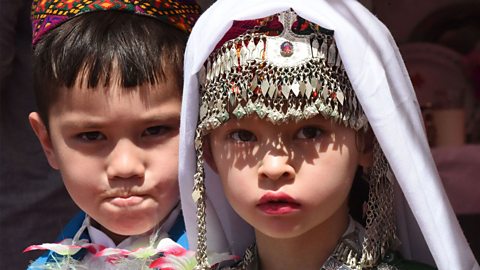
Test your knowledge
Play Bitesize secondary games. gamePlay Bitesize secondary games
Have fun playing science, maths, history, geography and language games.

More on Literature
Find out more by working through a topic
- count10 of 18

- count11 of 18

- count12 of 18
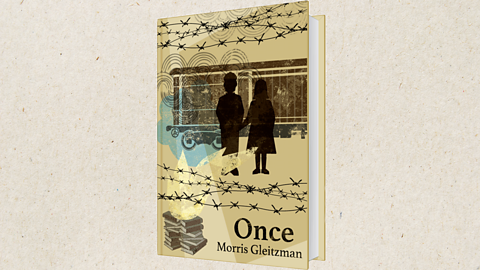
- count13 of 18
